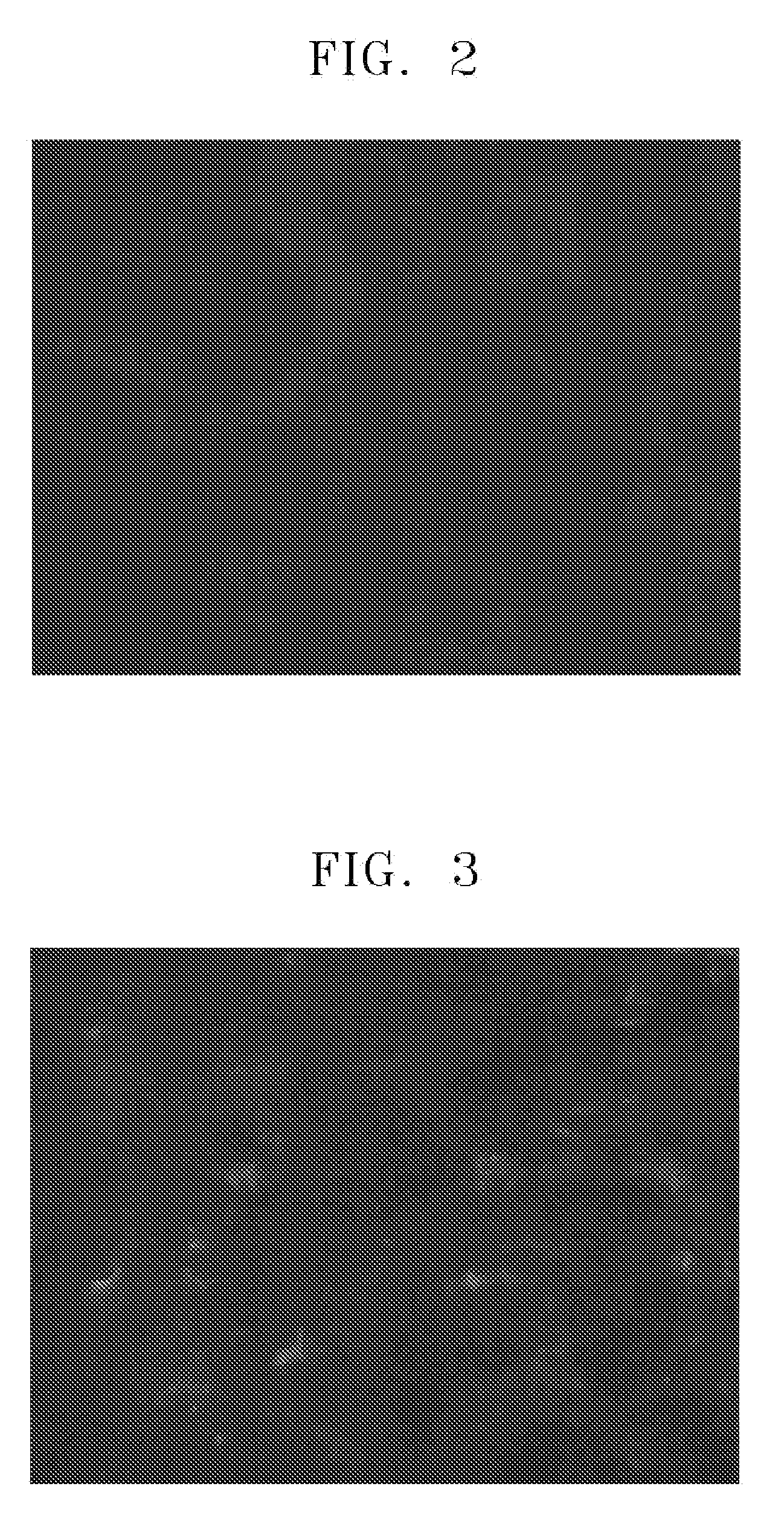Electrode for secondary battery, manufacturing method thereof and secondary battery employing the same
a secondary battery and manufacturing method technology, applied in the field of secondary battery electrolytic converters, can solve the problems of poor endurance, foldability and bendability of the electrolytic converter formed using the thick active material layer, difficult to cope with various battery designs, and high cost, and achieve the effect of improving thickness uniformity
- Summary
- Abstract
- Description
- Claims
- Application Information
AI Technical Summary
Benefits of technology
Problems solved by technology
Method used
Image
Examples
example 1
Preparation of Current Collector
[0065]A 15 μm thick aluminum foil was prepared as a current collector. To control a surface roughness, #800-grit abrasive paper was used. During polishing, an aluminum foil was placed on a flat glass plate and polished with the abrasive paper for 1 minute. The polished current collector was cut into a size of 10 cm in breadth and 8 cm in length and adhered to an A4-size 100 μm thick polyethyleneterephthalate (PET) film. A surface of the current collector was cleaned with a wiper soaked with ethanol in order for the current collector to be ready for printing.
[0066]Measurement of the Surface Roughness
[0067]An unpolished aluminum foil or a polished aluminum foil was adhered to a glass substrate having a surface roughness Ra of 0.5 nm to then measure the surface roughness of the adhered product. The surface roughness of the adhered product was measured using a surface profiler P-16 manufactured by KLA-Tencor. The X scan size of laser for the surface profi...
example 2
[0077]An electrode for a secondary battery was manufactured in the same manner as in Example 1, except that #120-grit abrasive paper, instead of #800-grit abrasive paper, was used during the polishing of a current collector.
PUM
 Login to View More
Login to View More Abstract
Description
Claims
Application Information
 Login to View More
Login to View More - R&D
- Intellectual Property
- Life Sciences
- Materials
- Tech Scout
- Unparalleled Data Quality
- Higher Quality Content
- 60% Fewer Hallucinations
Browse by: Latest US Patents, China's latest patents, Technical Efficacy Thesaurus, Application Domain, Technology Topic, Popular Technical Reports.
© 2025 PatSnap. All rights reserved.Legal|Privacy policy|Modern Slavery Act Transparency Statement|Sitemap|About US| Contact US: help@patsnap.com


